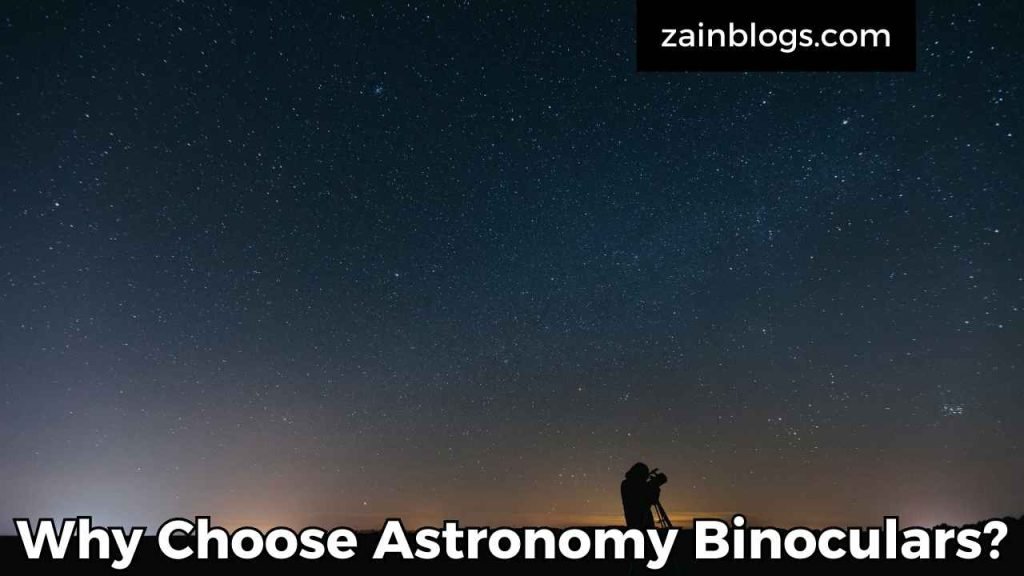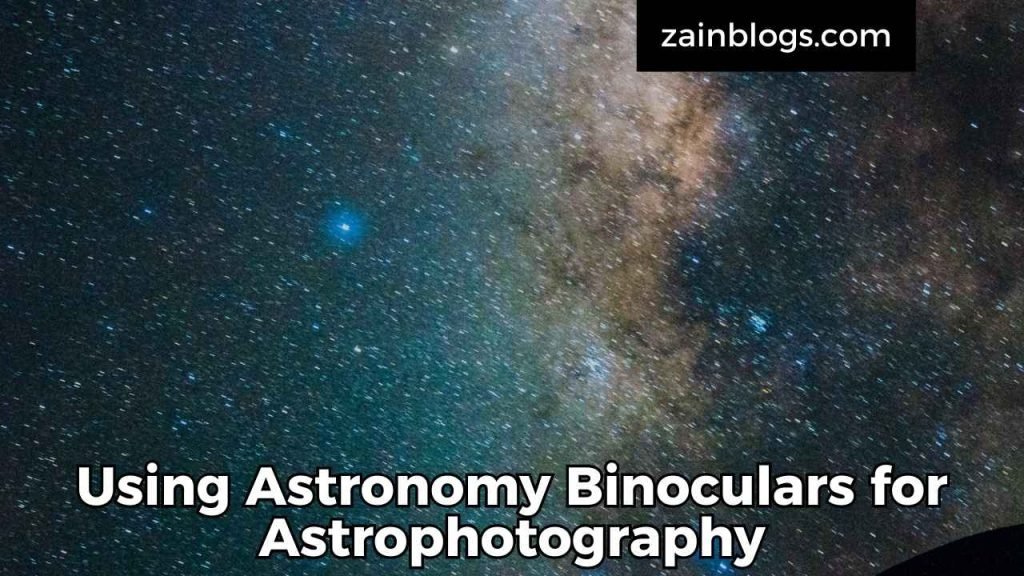Table of Contents
Introduction
If you’ve ever appeared up on the night sky and marveled on the stars, planets, and distant galaxies, you might have wondered how you can see them greater genuinely. Astronomy binoculars can be your gateway to the universe, providing a completely unique and immersive stargazing revel in. In this manual, we’re going to dive deep into the sector of astronomy binoculars, exploring their advantages, capabilities, and a way to pick out the perfect pair for your celestial adventures.

Why Choose Astronomy Binoculars?
When it comes to stargazing, many human beings without delay think about telescopes. While telescopes are high-quality gear for deep space statement, astronomy binoculars offer a greater accessible and versatile option. They provide a much wider discipline of view, are simpler to handle, and require much less setup. Additionally, binoculars are transportable and can be used for numerous different sports past stargazing.
In this phase, we’ll discover why astronomy binoculars is probably the proper choice for you. We’ll discuss their blessings, along with ease of use, affordability, and the potential to offer a extra herbal view of the night sky compared to telescopes.
Understanding the Basics
Astronomy binoculars are specialized optical instruments designed for celestial remark. They vary from everyday binoculars in numerous approaches, which include their magnification strength, lens length, and optical great. In this section, we’re going to ruin down the important thing additives of astronomy binoculars, consisting of their goal lenses, prisms, and eyepieces.
We’ll additionally speak the significance of things like magnification and field of view, helping you apprehend what makes astronomy binoculars precise and why they are suitable for stargazing.
The Key Features of Astronomy Binoculars
Not all binoculars are created equal, especially with regards to astronomy. In this segment, we’re going to delve into the crucial features to search for in astronomy binoculars. We’ll cowl factors which include:
- Magnification and Aperture: How these elements have an effect on your viewing enjoy.
- Optical Coatings: The role of coatings in improving photograph readability and brightness.
- Prism Systems: Understanding one of a kind prism types and their impact on picture best.
By the stop of this section, you’ll have a clear know-how of what features to prioritize whilst selecting astronomy binoculars.
Choosing the Right Magnification for Stargazing
Magnification is one of the maximum critical elements to recollect when selecting astronomy binoculars. Higher magnification permits you to see greater element, but it additionally narrows the field of view and might make it tougher to hold the binoculars steady. In this phase, we will explore the correct magnification ranges for distinct types of astronomical observations, from gazing the moon to monitoring distant galaxies.
We’ll provide recommendations on balancing magnification with different elements to make certain you get the pleasant viable viewing revel in.

How Bigger is Better
The aperture of a binocular is the diameter of its objective lens, and it plays a massive function in figuring out how a whole lot light the binoculars can acquire. A large aperture allows for brighter and more distinctive perspectives of celestial items. In this phase, we will discuss a way to pick out the right aperture length on your desires, taking into account factors like portability and the sort of objects you desire to examine.
Field of View
The subject of view (FOV) refers back to the extent of the night time sky you may see via the binoculars. A wider field of view is beneficial for tracking moving objects and getting a sense of the general sky. In this section, we will provide an explanation for a way to interpret FOV measurements and why it topics for astronomy. We’ll also offer hints on finding the right balance among subject of view and magnification.
Optical Coatings
Optical coatings are special layers applied to the lenses of binoculars to lessen glare, beautify comparison, and enhance picture brightness. In this phase, we’ll discover the unique sorts of coatings, consisting of absolutely multi-coated and segment-covered optics, and the way they affect the quality of your stargazing revel in. You’ll research why these coatings are important and how to pick out binoculars with the exceptional optical overall performance.
The Heart of Binocular Optics
Binoculars use prisms to invert and align the photograph before it reaches your eyes. There are two major styles of prism systems used in astronomy binoculars: Porro prisms and roof prisms. Each has its benefits and disadvantages. In this segment, we’ll examine these prism structures, explaining how they effect the layout and overall performance of astronomy binoculars.

Making Stargazing Enjoyable
Comfort is crucial when the usage of astronomy binoculars for prolonged durations. In this section, we’ll talk ergonomic functions that beautify user consolation, which includes adjustable eyecups, rubber armor, and weight distribution. We’ll offer hints on finding binoculars that in shape properly and are smooth to deal with, ensuring you could revel in stargazing without discomfort.
Binocular Mounts
For extended observations, particularly at higher magnifications, the use of a binocular mount or tripod can assist stabilize your view and reduce hand fatigue. In this segment, we will explore exclusive types of mounts and their blessings. We’ll additionally provide guidance on a way to pick out the right mount to your astronomy binoculars and how to set it up for highest quality stability.
Top Astronomy Binoculars on the Market
With such a lot of options to be had, deciding on the excellent astronomy binoculars can be overwhelming. In this section, we will evaluation some of the pinnacle-rated fashions on the market, highlighting their capabilities, professionals, and cons. We’ll provide guidelines for exceptional budgets and possibilities, helping you make an knowledgeable selection primarily based in your stargazing needs.
Caring for Your Astronomy Binoculars
Proper renovation is essential for ensuring the durability and performance of your astronomy binoculars. In this segment, we’re going to offer hints on cleaning and storing your binoculars, as well as commonplace problems to observe out for. You’ll learn how to hold your optics in pinnacle circumstance so you can enjoy clean and colourful views of the night time sky.

Using Astronomy Binoculars for Astrophotography
While astronomy binoculars are mostly designed for visual observation, they can also be used in astrophotography with the right add-ons. In this phase, we’re going to explore the way to adapt your binoculars for shooting lovely pix of celestial items. We’ll speak the necessary equipment and techniques for combining binoculars with cameras for astrophotography.
Common Mistakes to Avoid with Astronomy Binoculars
Even skilled stargazers can make mistakes when using astronomy binoculars. In this segment, we’re going to identify not unusual pitfalls and provide suggestions on a way to avoid them. From improper focusing to choosing the wrong magnification, we’re going to cowl the problems which can effect your stargazing revel in and how to deal with them.
Also Read: VR Software Test Engineer: A Comprehensive Guide 2024
Conclusion
In your journey to explore the night sky, astronomy binoculars can be an invaluable tool, offering a perfect blend of accessibility, portability, and powerful performance. From their ability to provide a wide field of view to their ease of use compared to telescopes, these binoculars open up a world of celestial wonders for both beginners and seasoned stargazers. Throughout this guide, we’ve delved into the essential features of astronomy binoculars, including magnification, aperture size, optical coatings, and prism systems.
FAQ About Astronomy Binoculars
Q1: What type of binoculars are best for astronomy?
Ans: For astronomy, binoculars with a larger objective lens diameter (e.g., 50mm or more) and moderate magnification (e.g., 10x) are ideal, as they offer a bright, clear view of celestial objects.
Q2: Are astronomy binoculars worth it?
Ans: Yes, astronomy binoculars are worth it for stargazers and amateur astronomers because they provide a wider field of view and brighter images of celestial objects compared to standard binoculars.
Q3: How are binoculars used in astronomy?
Ans: Binoculars are used in astronomy to observe stars, planets, and other celestial objects. They offer a wide field of view, which helps in scanning the night sky and locating various astronomical features.
Q4: Are 20×50 binoculars good for astronomy?
Ans: 20×50 binoculars can be good for astronomy, but they may be heavy and less stable for handheld use. A lower magnification, such as 10×50, is often preferred for easier handling and a broader field of view.
Q5: What makes binoculars good for astronomy?
Ans: Binoculars that are good for astronomy typically have large objective lenses (e.g., 50mm or more) for greater light-gathering ability, moderate magnification for stability, and a wide field of view for easier object tracking.
Q6: What magnification are best for astronomical binoculars?
Ans: Magnifications between 7x and 15x are best for astronomical binoculars. They provide a good balance between detail and field of view, making it easier to observe celestial objects without excessive shake.
Q7: What size binoculars are best for stargazing?
Ans: For stargazing, binoculars with an objective lens size of 50mm are generally considered optimal. They offer sufficient light-gathering power and a manageable size for handheld use.
Q8: Can all binoculars be used for stargazing?
Ans: While many binoculars can be used for stargazing, those with larger objective lenses (e.g., 50mm) and lower to moderate magnification (e.g., 7x to 15x) are particularly suited for the best viewing experience.








